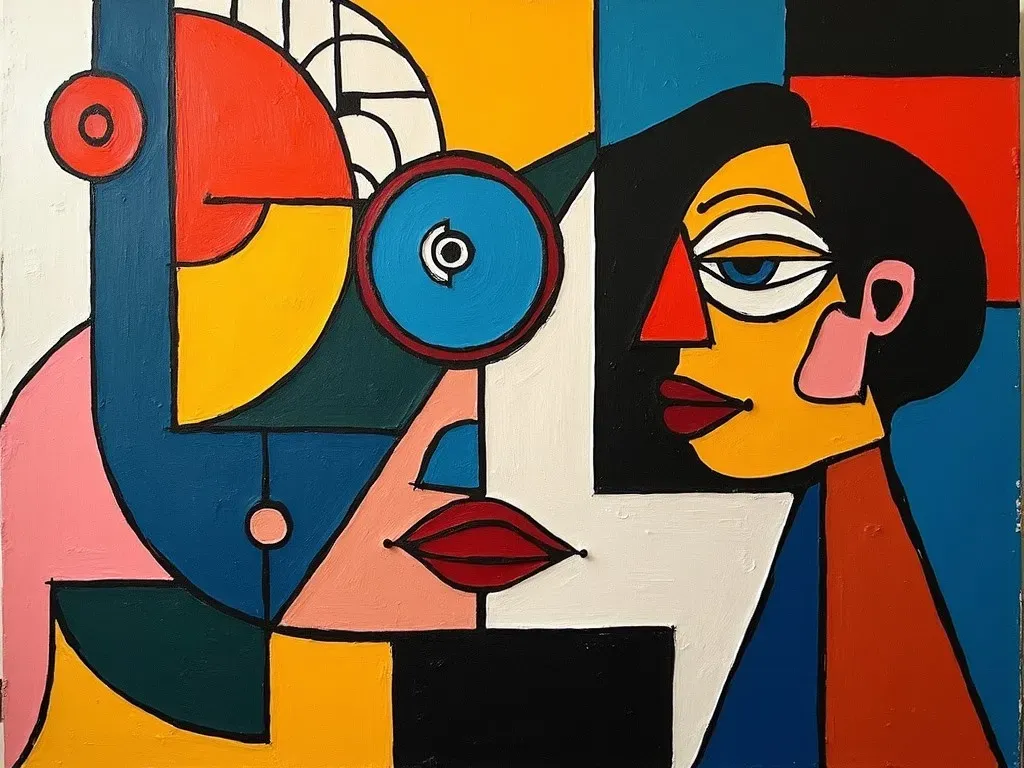Pablo Picasso’s cubism artworks are celebrated for their groundbreaking approach to visual representation, pioneering a movement that transformed the landscape of modern art in the early 20th century.
The Foundations of Cubism in Picasso’s Art
Cubism, co-developed by Pablo Picasso and Georges Braque between 1907 and 1914, revolutionized how reality is perceived in art. In essence, this movement emphasized the importance of geometric forms and the depiction of subjects from multiple viewpoints, challenging traditional perspectives. Picasso’s cubist paintings are particularly renowned for their fragmented structure and innovative use of color.
Here are a few defining characteristics of Picasso’s cubism artworks:
- Geometric Shapes: Artworks consist of fragmented and abstract shapes.
- Multiple Perspectives: Subjects are represented from various angles, allowing viewers to explore a scene in a comprehensive manner.
- Monochromatic Palette (in Analytical Cubism): Later works often utilized a restrained color scheme, focusing on form and structure.
Breaking Down Picasso’s Cubism Styles
1. Analytical Cubism
Analytical Cubism is the early phase of Picasso’s cubism movement, characterized by a monochromatic palette and an emphasis on the analysis of the subject. Notable works from this period include "Violin and Candlestick" (1910) and "Man with a Guitar" (1912).
| Artwork | Year | Description |
|---|---|---|
| Violin and Candlestick | 1910 | An exploration of instruments through fragmented forms. |
| Man with a Guitar | 1912 | A depiction of a man with a guitar, showcasing multiple viewpoints. |
2. Synthetic Cubism
Transitioning into Synthetic Cubism around 1912, Picasso introduced brighter colors and simpler shapes. This phase often incorporated mixed media and collage Techniques. Iconic examples are "Still Life with Chair Caning" (1912) and "Three Musicians" (1921).
| Artwork | Year | Description |
|---|---|---|
| Still Life with Chair Caning | 1912 | Mixed media piece using real chair caning to form the table. |
| Three Musicians | 1921 | A vibrant, colorful representation of musicians in a fragmented layout. |
Important Works of Picasso’s Cubism Artworks
Les Demoiselles d’Avignon (1907)
Often considered the precursor to cubism, this painting depicts five female nudes with an intense and distorted sense of space. Its bold departure from traditional representation shocked and captivated viewers alike.
Guernica (1937)
Though not strictly a cubist work, Picasso’s "Guernica" showcases the emotional intensity and abstract representation that cubism brought to modern art. This politically charged piece addresses the tragedies of war, while its fragmented forms convey chaos and suffering.
The Influence of Other Artists and Movements
Picasso’s innovative approach was influenced by various artists and movements including:
- Paul Cézanne: His emphasis on geometric forms greatly inspired Picasso’s early works.
- African Art: The simplicity and stylization in African sculptures profoundly informed Picasso’s techniques and subject matter.
As Picasso developed cubism, he collaborated closely with Georges Braque, exploring the depths of form and space together. This collaboration marked a significant period in artistic exploration and innovation.
Iconic Cubist Portraits by Picasso
Picasso’s cubist portraits are not only reflections of figures but also emotional explorations. Key cubist portraits include:
- Portrait of Ambroise Vollard (1910)
- Weeping Woman (1937)
These works exemplify the expressive potential and complexity of cubism.
Understanding the Legacy of Picasso’s Cubism Artworks
The impact of Picasso’s cubist artworks can still be felt in contemporary art today. Analysts note that cubism laid the groundwork for modern movements such as abstract art, surrealism, and expressionism. As art continues to evolve, Picasso’s contribution remains a pivotal part of the overarching narrative of artistic transformation.
Frequently Asked Questions
Q1: What is Cubism in Art?
A1: Cubism is an art movement that abandoned perspective and traditional form in favor of geometric shapes and multiple viewpoints. It was mainly developed by Pablo Picasso and Georges Braque.
Q2: What are the two main types of Cubism?
A2: The two main types are Analytical Curbism, which emphasizes monochromatic palettes and complex shapes, and Synthetic Cubism, which uses brighter colors and simpler shapes.
Q3: Can you name some of Picasso’s most important cubist works?
A3: Some key works include "Les Demoiselles d’Avignon," "Guernica," "Violin and Candlestick," and "Still Life with Chair Caning."
For detailed information on Picasso’s journey through Cubism, check out Britannica’s comprehensive overview.
Conclusion
The evolution of Picasso’s cubism artworks reflects a radical shift in visual arts that emphasizes perception, geometry, and abstraction. Picasso’s innovative spirit not only transformed his own artistic practice but also paved the way for future generations of artists to explore new territories in visual representation.
